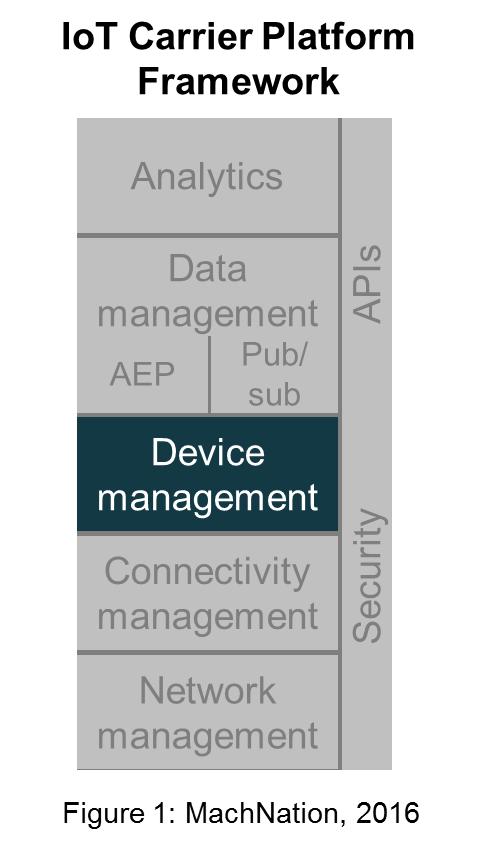Managing IoT Devices in Modern Networks
The Internet of Things will transform businesses that can manage, mine and analyze data from connected devices.
[Editor's note: The Internet of Things (IoT) is forecasted to grow to 24 billion connected devices by 2025 according to analyst firm MachNation. Enterprises, communications service providers (CSPs), system integrators and technology vendors have tremendous interest in understanding the ecosystem more deeply so they can take advantage of the opportunities presented by IoT. In an ongoing series of blogs, MachNation presents a five-layer IoT carrier platform framework to better understand the types of IoT systems needed to support IoT deployments.]
Some say that the Internet of Things (IoT) is not about the “things.” Rather, IoT is about the business transformations that happen when businesses can better understand their processes using analyzed data from those things. The sentiment is valid, but things are an integral part of the IoT equation. And automating device management is critically important if carriers and enterprises want to realize a strong ROI from IoT solutions.
In prior blogs, we discussed MachNation’s 5-layer IoT carrier platform framework, IoT network management, and IoT connectivity management. In this blog, we discuss IoT device management.
Device management, according to MachNation’s 2015 IoT Application Enablement ScoreCard, is the platform layer that allows carriers and enterprises to manage IoT devices (e.g., gateways, IoT computers, edge nodes, modules, routers, sensors) to complete firmware updates, apply security patches, set up alerts, and provide device-centric reports using an administrative tool. Given the heterogeneity of IoT devices, having scalable, flexible, and secure device management is one of the most important platform components in ensuring a profitable IoT business.
This blog talks about the three required components – device set-up and integration; device updates; and device oversight – of IoT device management platforms.

Device set-up and integration: MachNation believes that a good device management solution must provide an open, well-documented framework for device integration, as well as a collection of genericized agent code samples and device-specific agents. IoT devices vary from industry to industry. Even within a given vertical there are myriad device types. Without a dominant standard, device integration typically requires some type of a device agent to go beyond basic connectivity and provide device management.
A device agent also helps create some homogeneity in the set of device management capabilities. Although the benefits of having a device agent are clear, a provider of a device management platform (including a carrier) cannot possibly provide this level of integration and support for all desired and requested IoT edge devices and IoT gateways. Providers of device management must consider whether to integrate their device management platforms with specific devices or to go with an API-only approach where integration is the responsibility of a customer or an integration partner.
Device updates: Device management platforms must also supply capabilities to allow regular device firmware upgrades. This is especially necessary for devices that are expected to be operational for a long time, because the longer a device is operational, the more difficult it is to keep secure. A user of an IoT solution needs to be able to send updates to IoT devices to patch security exploits and deliver bug fixes and new features. The ability for over-the-air updates to things is a valuable and necessary component for IoT: An IoT device management platform needs to provide this functionality so that a public or private organization can fully realize the value of its IoT solution.
Device oversight: A device management platform should also have a set of interfaces that allows devices to be monitored to ensure proper and secure operations. Such monitoring capability should allow an administrator to see individual device-level management data, including device metadata, key performance indicators, and abnormalities that may need to be investigated. Device management platforms should also provide monitoring capabilities at a system level so users have a macro view of the device fleet state. This functionality provides another window into the operations of the solution at the edge and in the fog to ensure proper operation and uptime.

IoT device management ensures that carriers and enterprises can easily and safely set up, secure, and monitor IoT devices. These tools, sometimes provided by IoT application enablement vendors, give carriers and enterprises an automated way to set up devices, push out updates, and monitor the devices to ensure optimal performance.
In future blogs we will discuss IoT data management and analytics.
- Steve Hilton is an analyst at MachNation, an IoT research firm. His opinions are not necessarily those of Netcracker, its management or employees.
Photo by: Pratyitno via Flickr